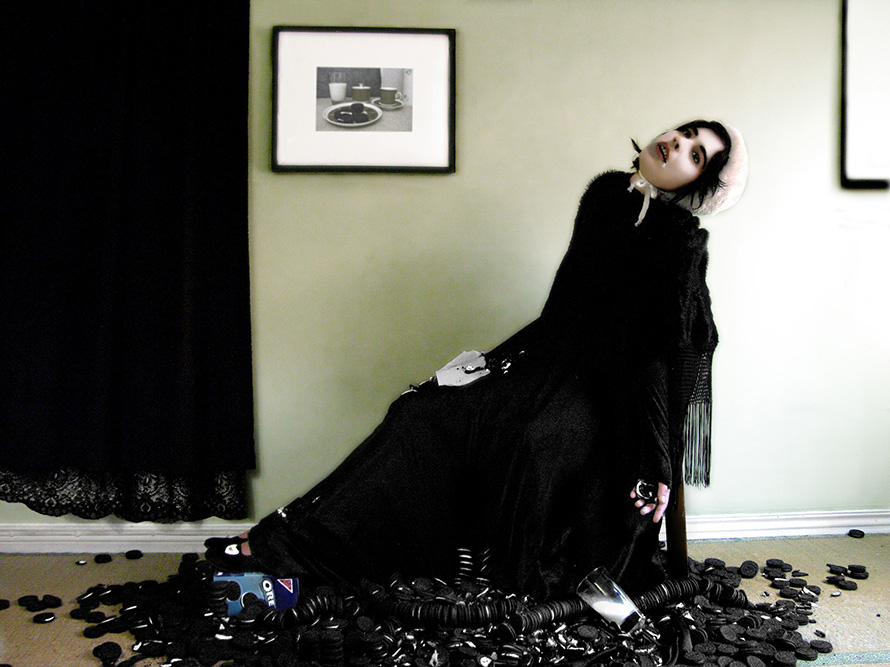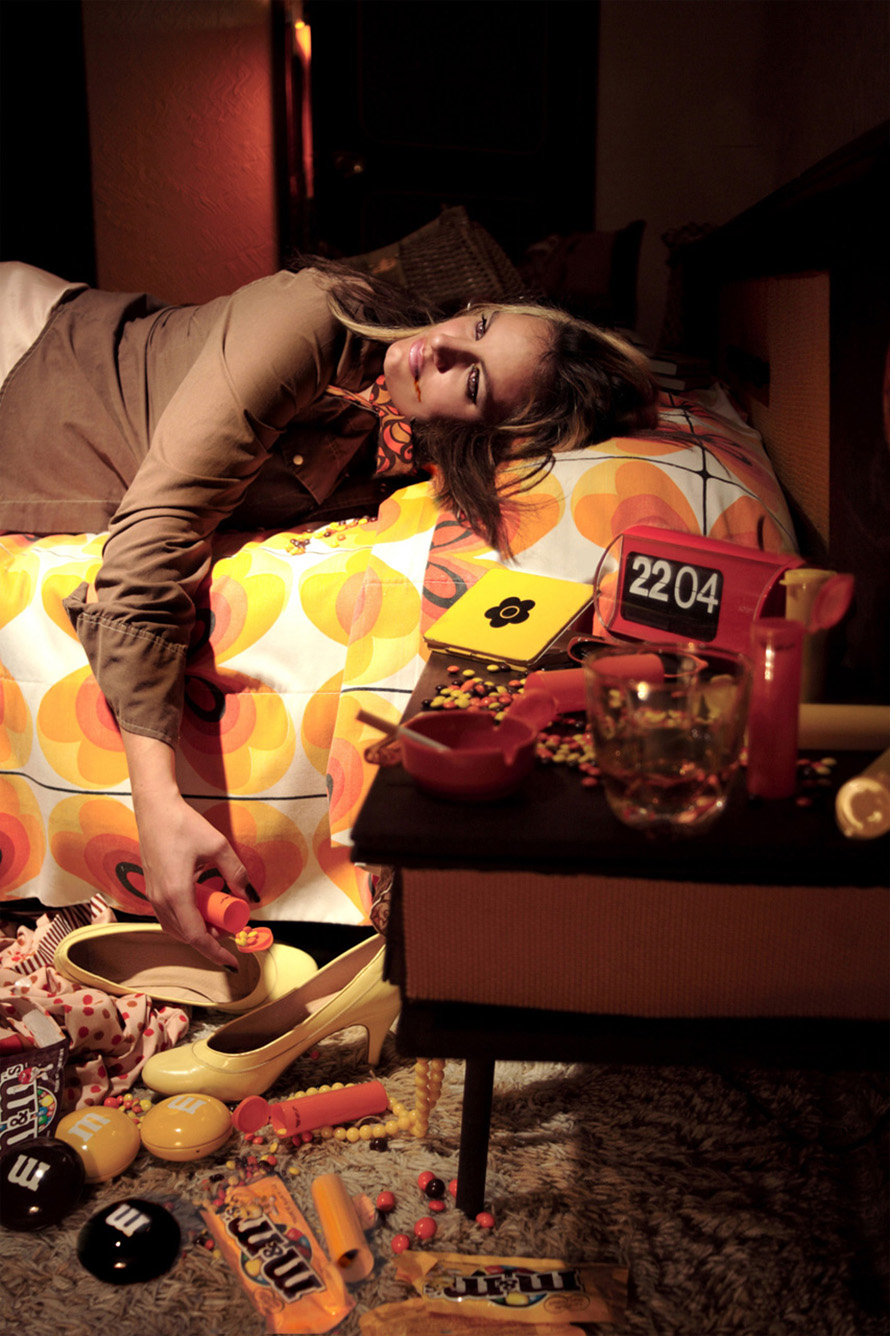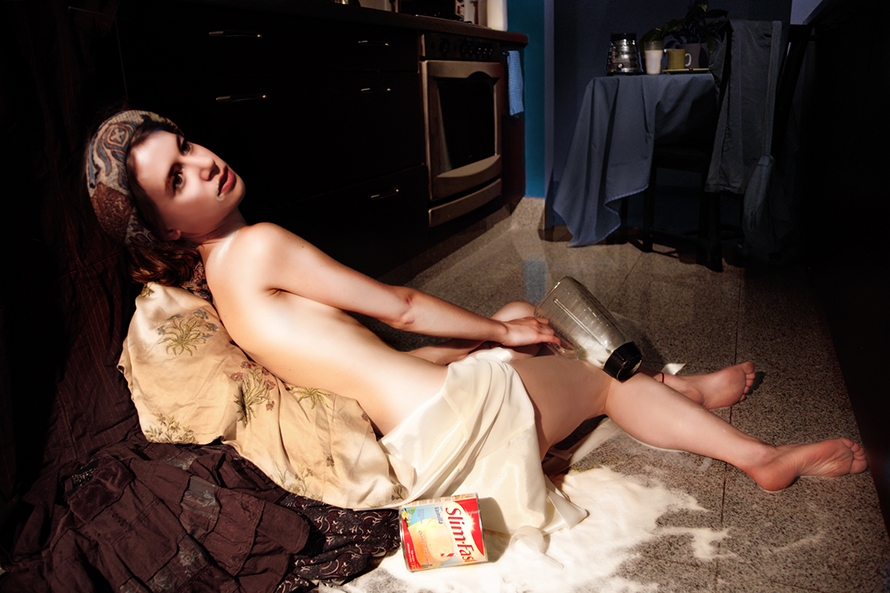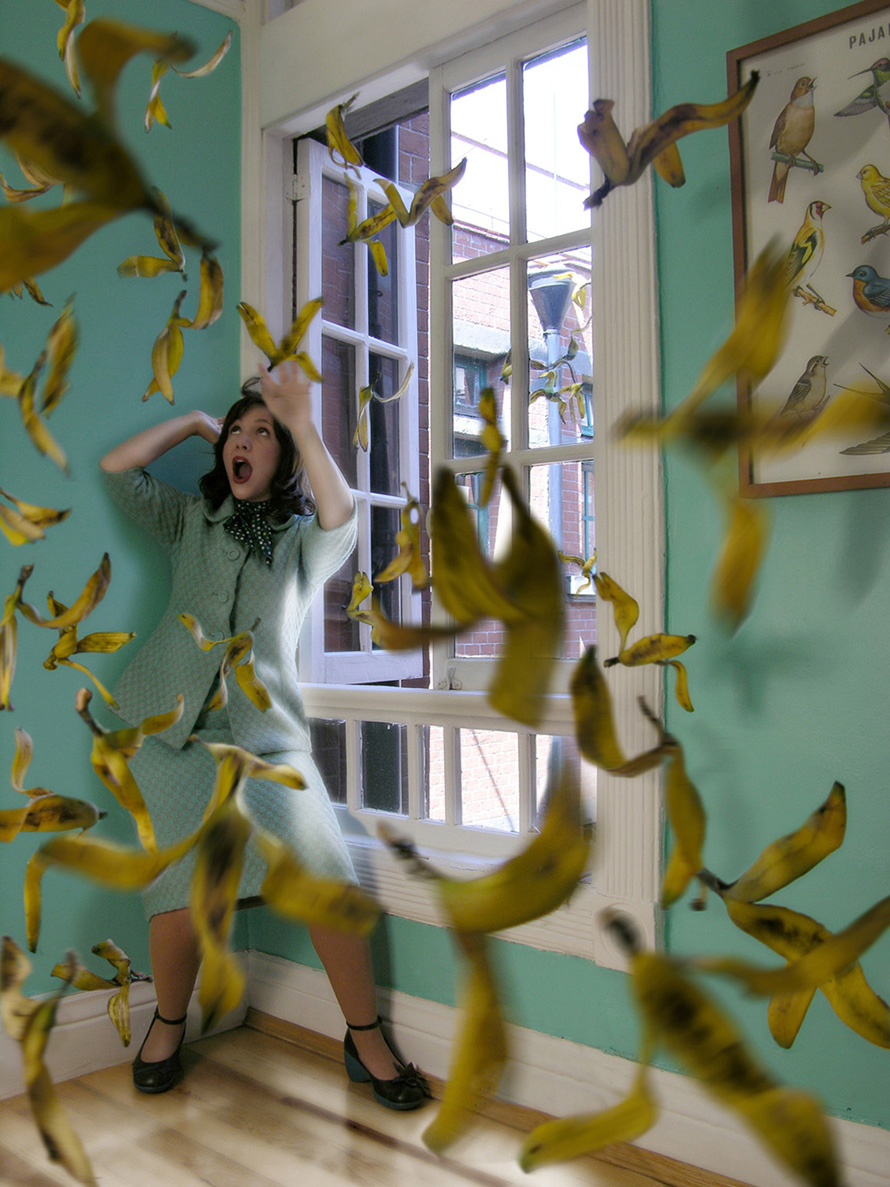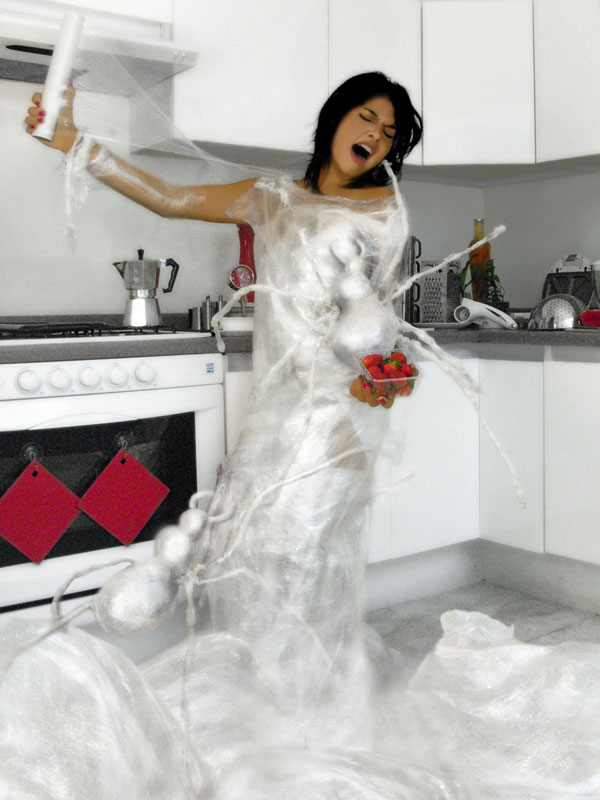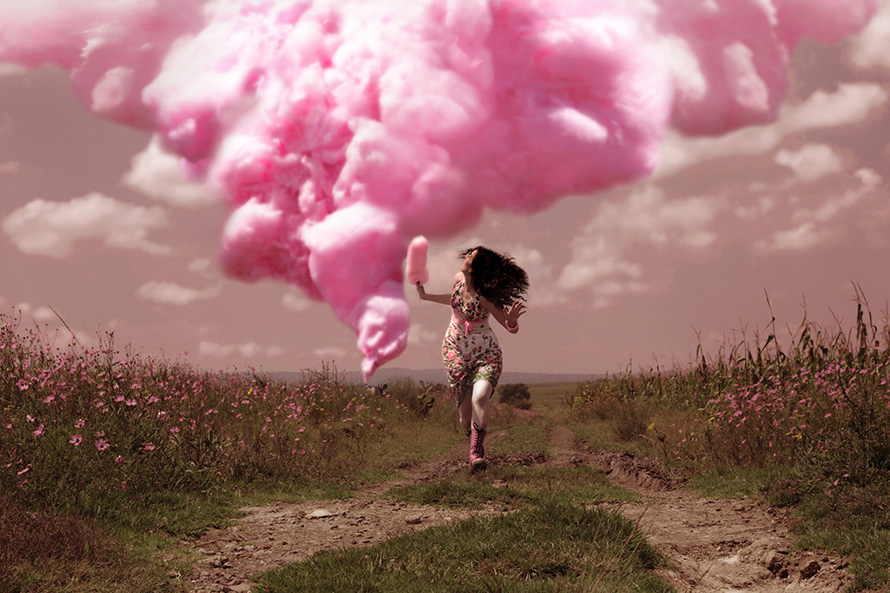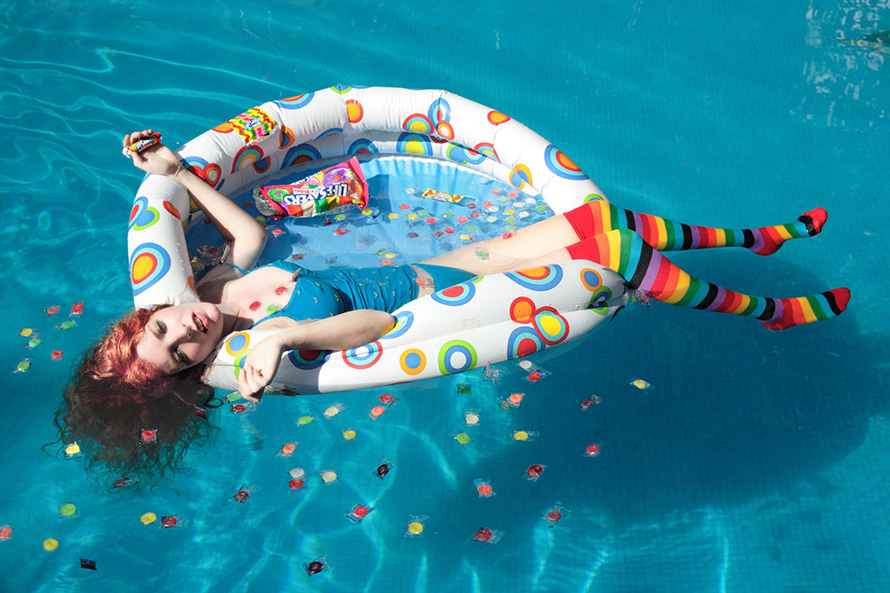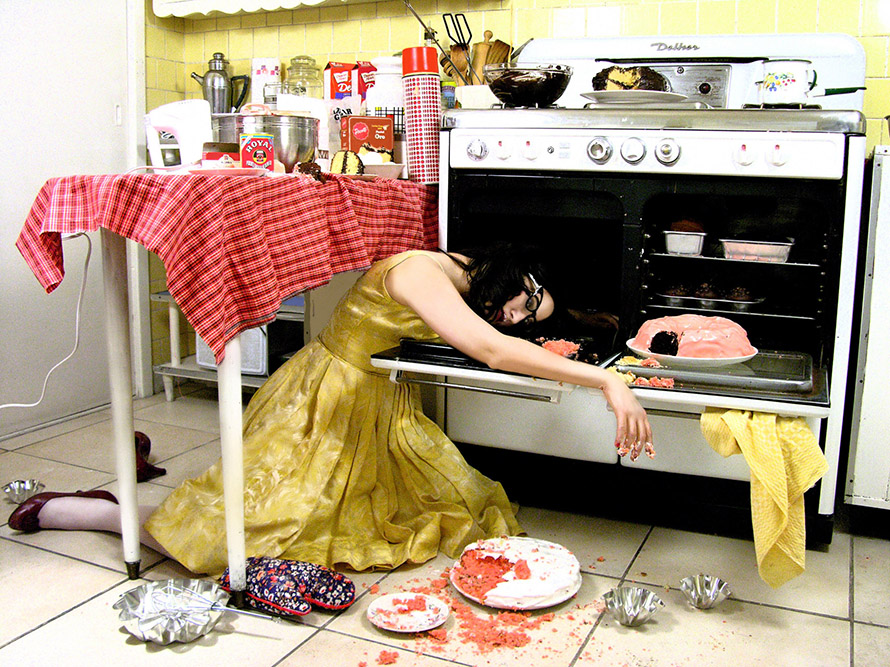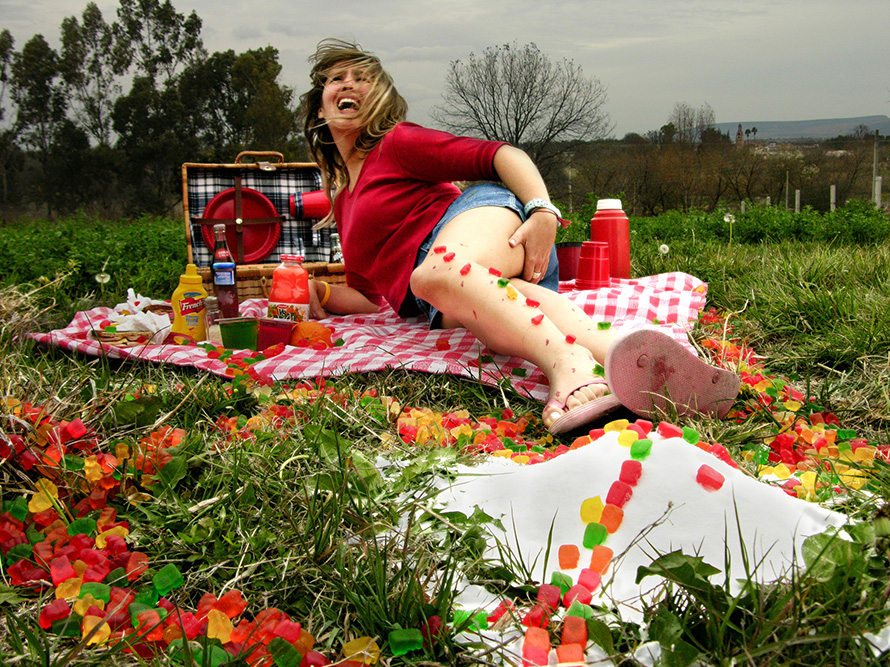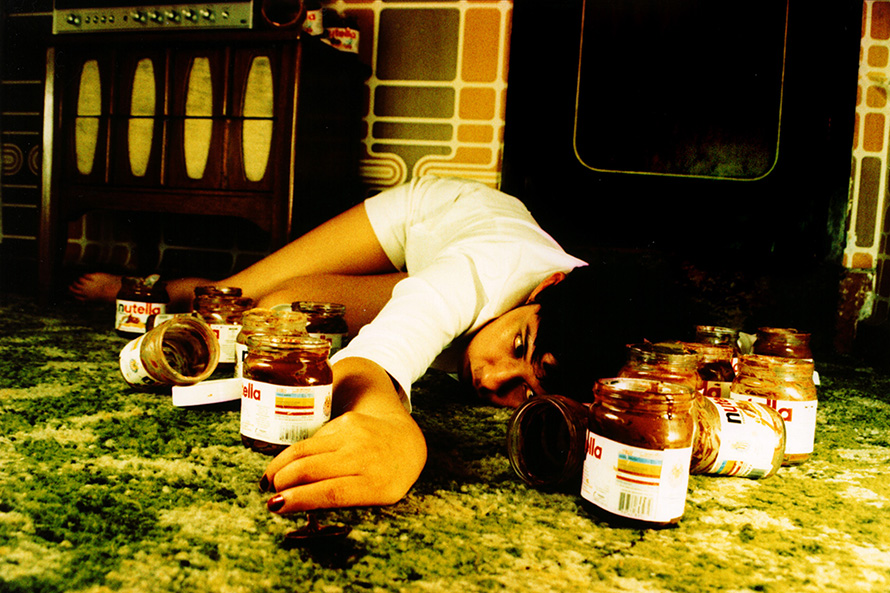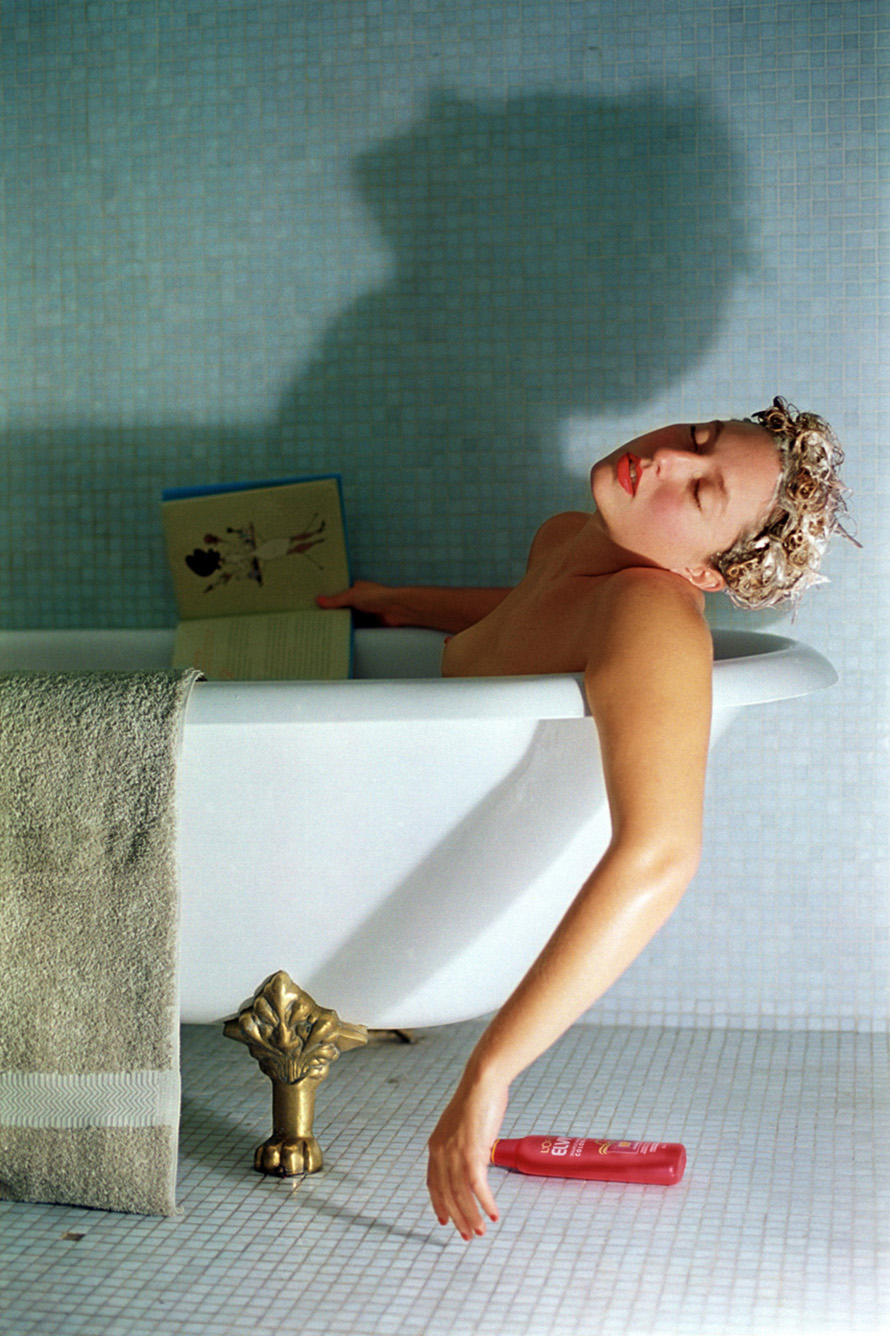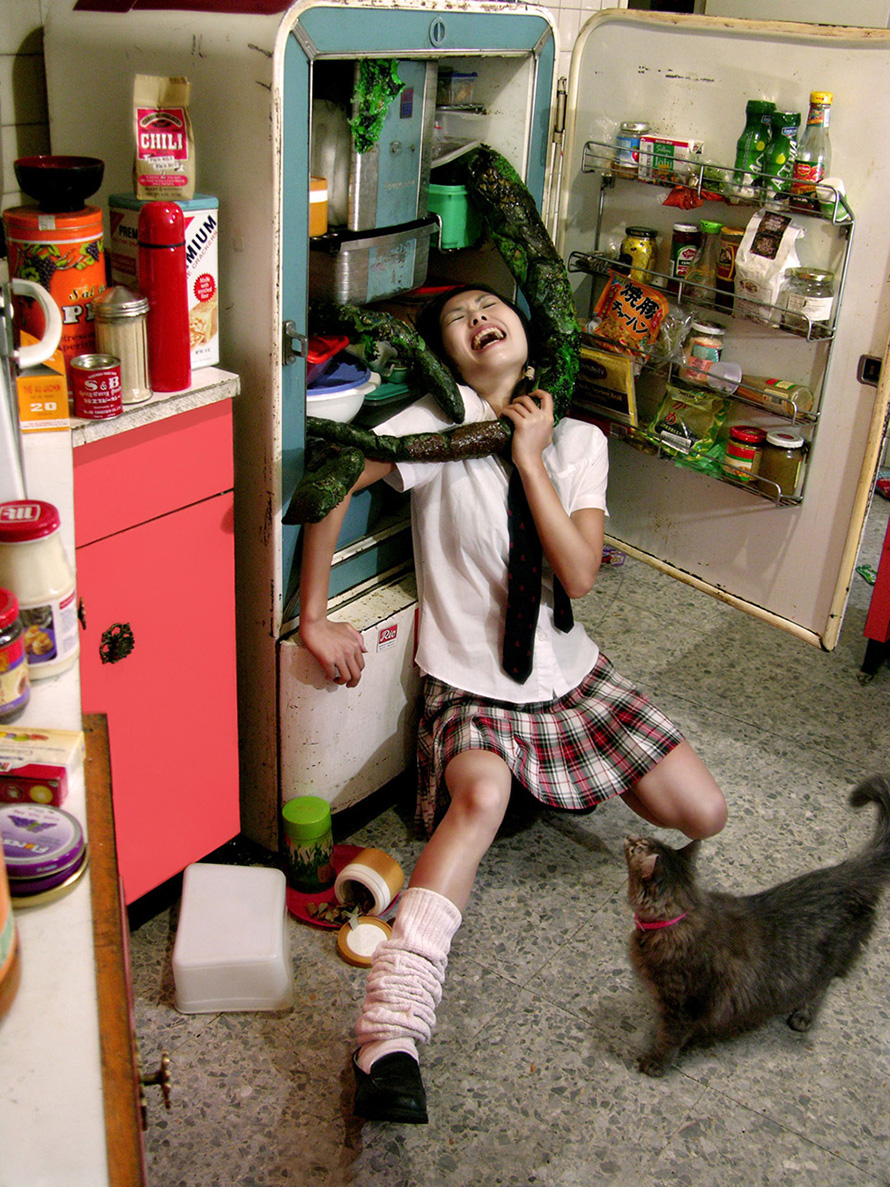How did you come up with the idea for this series?
Daniela Edburg:I started this series in 2001 for my art school thesis. I painted back then, and I wanted to do a series of remakes of my favorite paintings. [I planned to add] a spin by adding one element [that would be] very much out of context. The first attempt was Death by Shampoo, after the Death of Marat by Louis-David. But I lacked the skill to do a neoclassical reproduction. So, I decided to do [the reproductions] with photography instead and modified my thesis subject to be about the relationship between glamour and death. The medium itself has a glamorizing effect, and through color, composition, and humor you can create the illusion that something is aesthetically pleasing when, in reality, it could be horrible or gross.
TMN:The detail in these photographs is so elaborate. How do you put together these bright narrative scenes?
DE:First I find my victim. It is always a friend of mine; I never work with professional models. Each of the characters is defined by the little world she inhabits, so I usually take my color palette from the product that consumes her. I start putting aside everything I have in those colors. I’m not selective at first, I just start filling my studio with all the stuff I have, or I find, or my friend has that might work. I find the clothes the same way and I start this growing pile of orange and brown, or pink, or rainbow colored clothing.
TMN:How do you decide where to shoot these characters?
DE:The location is usually a familiar place; my grandmother’s house, a friend’s kitchen, or my husband’s studio. Usually, it’s a place that I loved when I saw and that I have in my head until I find a scenario where it works. I’m always surprised at how everything comes together when doing a photo. For Death by Cotton Candy, I had no idea what the location would be. We where just driving until we found the perfect spot. My friend Paulina was wearing a dress with pink flowers, and suddenly we realized we were surrounded by pink flowers. So, we stopped and took the picture.
TMN:Why do food and beauty products have such a sinister effect on the women in your photographs?
DE:I guess I am pretty compulsive. That which gives me pleasure one minute, causes guilt the next. I am surprised at how much I like the products I consume, but, if you stop for one second to think about it, it’s absurd. Yet, you can’t stop. [The work] is not a criticism it’s just an exaggeration of my own reality.
TMN:Your Drop Dead Gorgeous series reminds me of some horror films and thrillers featuring women—Carrie, the Stepford Wives, Basic Instinct, Rosemary’s Baby—have any films or scenes influenced your work?
DE:Death by Bananas is an almost direct reference to Hitchcock’s The Birds. For Death by Cotton Candy I watched the Wizard of Oz, many times. I love the tornado scene. The first picture I did that was more referential to film than to painting or television, was Death by Gummi Bears; a girl having a picnic and from a nearby sugar anthill thousands of gummi bears stream out to devour her. Then, I did Death by Tupperware where a Japanese high school student in her uniform is being attacked by an enormous slimy tentacle from a creature that has formed in her refrigerator. In Death by Saran Wrap a girl is trying [to wrap] a small container of strawberries when two huge plastic spiders start to wrap her into a cocoon of plastic wrap. All these [photographs] come from the classic monster movies like the creature from the black lagoon, which I love.
TMN:Even though these photos are lighthearted, there’s something really transfixing. Why are we fascinated by the tragic deaths of glamorous, young, beautiful women?
DE:I think that death is very seductive. It makes us appreciate the beauty in all that is ephemeral. I think Baudrillard said we seduce with our weakness. When are we frailer than in the moment when we are losing our lives?
TMN:Your photos also look like advertisements where something has gone terribly wrong. How does your work reference advertising?
DE:I guess the presence of the brand is what turns [an image] into an advertisement. It is inevitable to [look at this work and] think back to images in television or magazines. I think if you actually slapped a slogan on top of it would even work.
TMN:Of course, these photographs are much more subversive than advertising. Are you critiquing advertising?
DE:I really don’t consider my work a critique, although I like that many people do. Many times how the work is seen is more interesting than how it was conceived.
TMN:Is Nutella out to get us? Does cake have a dark side? How are food and beauty products actually harmful?
DE:There’s only your own dark side. The cake is not really to blame. It’s not really about the products, but the relationship of love and then hate that we have with them. When you look at a beautiful package of Oreos everything is new and shiny and attractive, and there is the promise of the sweetness and the pleasure, and then you go and open it and eat it and all you have are a stomachache, crumbs and garbage.
TMN:Why have you chosen these specific culprits—Oreos, gummi bears, a toaster, etc.?
DE:Its very autobiographical, in most cases, there is a story behind each photo. Some, like lifesavers, I don’t really have an obsession with the actual candy but I think it is one of the best designed packages, a real classic.
TMN:Some of your photographs seem retro, or dated. Is this intentional?
DE:The ones that have turned out retro are usually because of the location. Like the oven in Death by Cake. It was so beautiful I wanted it all to be built around it and around its style. So I identified the character with Betty Crocker, on a bad day. And it all turned out very fifties housewife. [Death by] Nutella and [Death by] M&M’s are very ’70s again because of the location. I wanted to use a room in my Grandma’s house before it was remodeled.
TMN:You live in Mexico D.F. What’s the difference between the response to your work in the States and in Mexico?
DE:I think the references are very universal. In both places I get different reactions; lots of laughter, lots of questions, and lots of stories. Many people come to tell me about how they once ate a whole lasagna.
